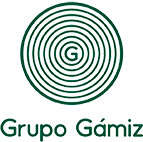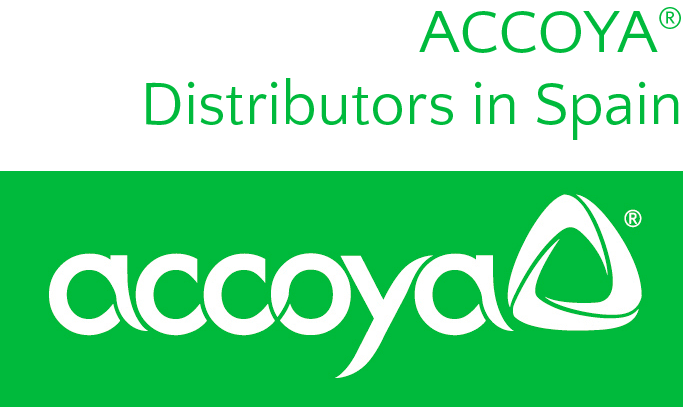Amsterdam reinvents itself as a doughnut
In the plan presented by the city authorities, the creation of a “materials passport” for the construction of new buildings stands out.
The “ring model” or “doughnut model”, created by the Oxford economist Kate Raworth, is the inspiration for Amsterdam’s plan to design a city based on the circular economy. The aim of the authorities of the Dutch capital is to come out of the recession caused by the coronavirus with a vision committed to the environment that successfully fosters economic reactivation.
It is a proactive and ecological response to the debacle caused by Covid-19. Looking to the future full of confidence in the socioeconomic results of a sustainable commitment in the medium and long term.
Regarding sustainable architecture, one of the measures already presented by Marieke van Doorninck, deputy mayor of Amsterdam, is the creation of the “materials passport”, that which aims to seek reusable materials in demolitions and promote the use of sustainable materials, such as wood, in the construction of the new buildings.
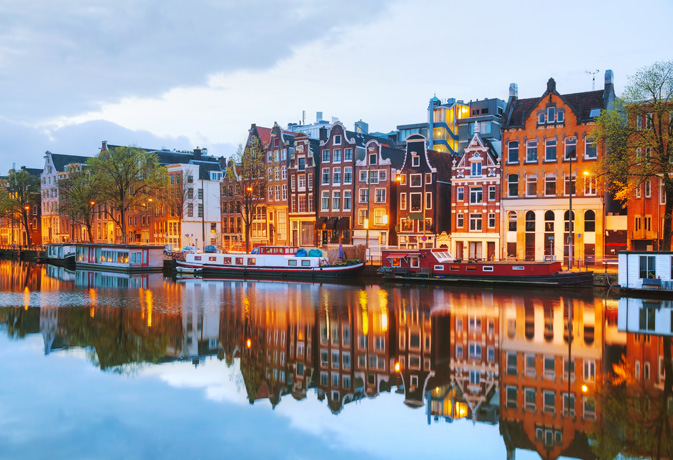
Amsterdam on the river Amstel
Objective: to get out of the hole
Kate Rawoth’s theory states that socioeconomic success must be shaped like a doughnut. The inner ring is what we need to live better than now: nothing more nothing less than meeting the sustainable development goals of the UNO (foods, health, education, equality, income, housing, etc.). Not enjoying these minimums cancels the concept of well-being and places us, literally, in a hole (the doughnut hole).
The outer ring is the limit of well-being that humanity can aspire to without damaging the environment. From this perspective it can be deduced that general well-being is located in the middle (ground) of the doughnut, where the needs of living beings and the planet in general are satisfied fairly.
Construction in wood, one of the keys to Amsterdam’s plan
Focusing on architecture and sustainability, within this plan, wood becomes a key component. A construction component, in fact. The deputy mayor Ms van Doorninck states that the city will regulate that the construction materials used most frequently are recycled or natural, and biologically based such as wood.
Aside from the terrible aftereffects of the coronavirus, Amsterdam has a serious housing problem, and constructing most buildings traditionally, for example using materials such as steel and concrete, would radically increase the local CO2 emissions, already very worrying, that are up by 31% in the city since the 1990s.
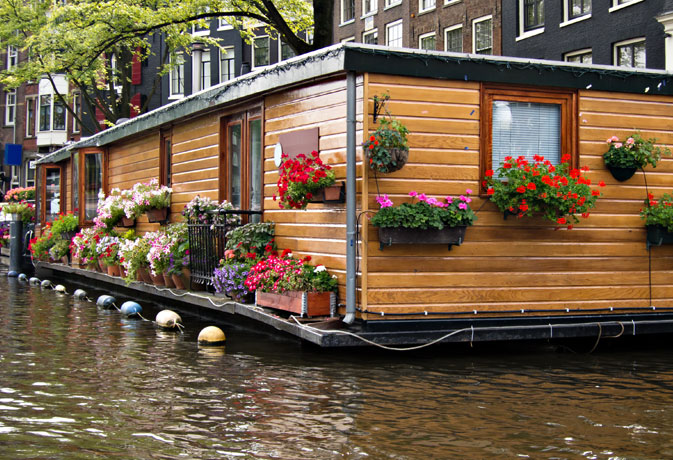
Floating wooden house in Amsterdam
Wood reduces carbon dioxide emissions
Wood is fundamental in Amsterdam’s plan because building with wood drastically reduces carbon dioxide emissions. Studies state that replacing steel and concrete with wooden structures could reduce CO2 emissions by between 14% and 31% worldwide.
The explanation lies, in addition to the virtues of its cell structure (wood absorbs CO2, making air healthier), in the minimal energy generated in its production. Unlike other materials such as steel and aluminium, wood products avoid greenhouse gases in their manufacturing process.
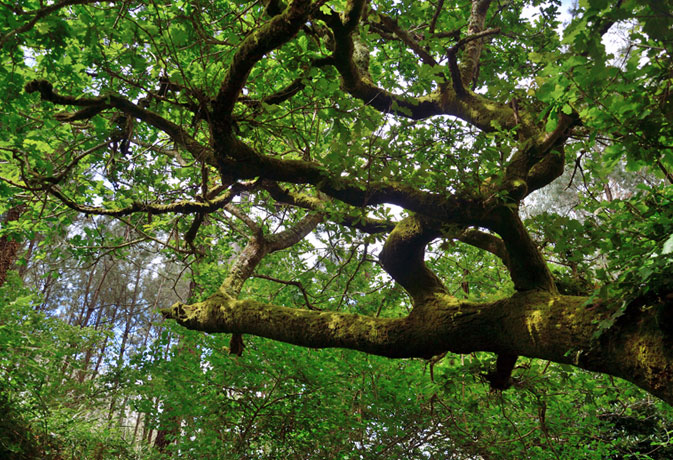
Oak forest
Sustainability is beautiful and creative
Many architects design their projects with ecological responsibility. Today it is much easier with the structural possibilities of wood, which makes it possible to develop sustainable construction solutions full of creativity, warmth and natural beauty.
One example is wooden curtain walling. Thanks to products such as VIGAM, the only oak glulam beam in the world with the CE marking for structural use, by GRUPO GÁMIZ, lightweight façades all over the world are starting to acquire the unique personality and elegance of wood, and saved from other materials with a less ecological footprint, such as steel and aluminium.
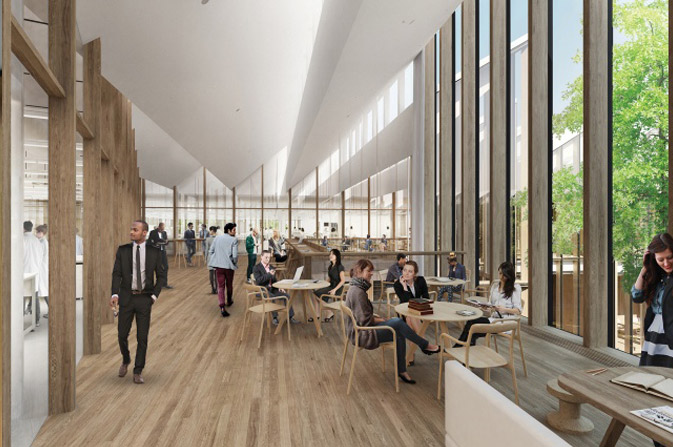
Cambridge Biomedical Campus | Arch: Herzog & de Meuron | Product: Application of curtain wall – Oak glulam
Architects also have access to ACCOYA® sustainable wood, the perfect product for exterior construction. This acetylated wood (a toxin-free process) has a written 50-year guarantee.
In short, it will be solutions like these that help architects all over the world to build post-coronavirus Amsterdam.
